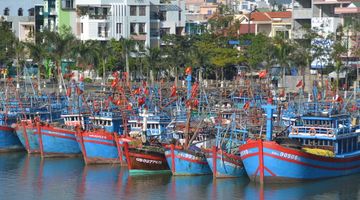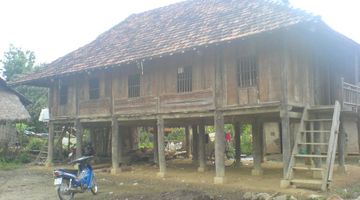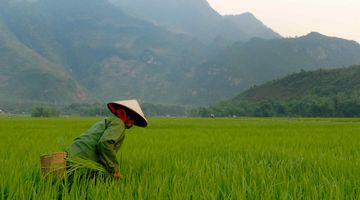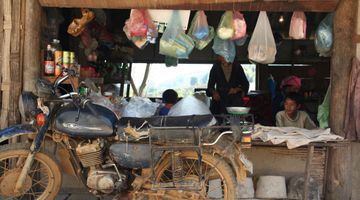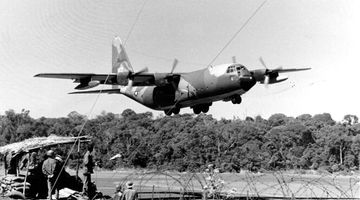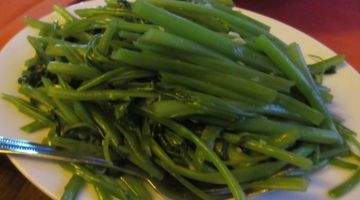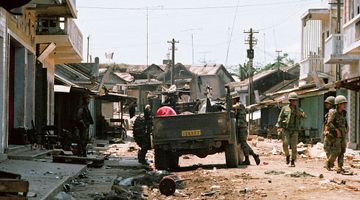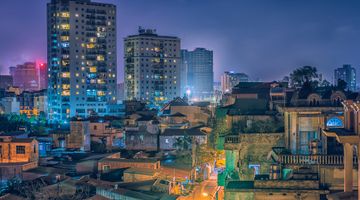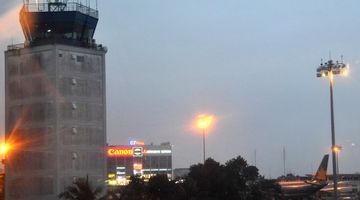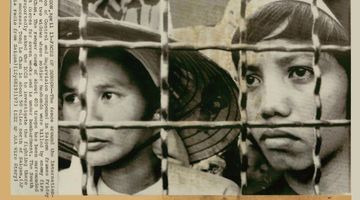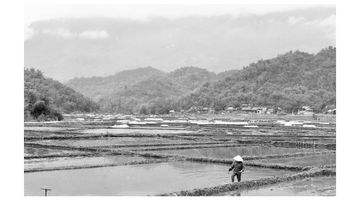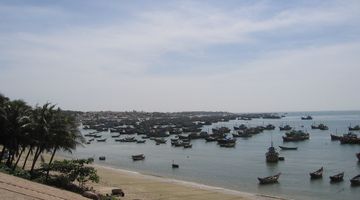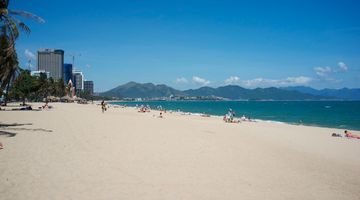Travel in Vietnam – Dangers, Scams and Useful Safety Tips
The friendly 'Hello, how are you?' is a phrase that you'll often hear when you first reach Vietnam. Most tourists will immediately assume the Vietnamese are some of the friendliest people in Southeast Asia. However, don't feel too relaxed by the apparent openness. You’re in a new country, and you still need to exercise caution. This article describes how to travel safely in Vietnam.
Is Vietnam safe to visit?
Vietnam is a safe country to visit. There aren't many serious crimes like what some would imagine in a developing country. Minor crimes, such as theft, in cities like Saigon or Hanoi are common. As long as you stay alert, you shouldn’t have any major problems. Other famous destinations including Danang, Phan Thiet, and Dalat are also generally safe to visit.
Crime
One of the typical crimes in Vietnam is pickpocketing. If you're walking around the city centre, especially in the backpacker's area, be aware of the women who start becoming a little too friendly. You may think they're just offering their "services", but they’re distracting you by touching and holding your arm, and without realising it, you've lost your wallet and phone. This is common in Vietnam, and people tend to see westerners as easy targets.
Bag snatching is another common crime by opportunistic thieves. If you're carrying a bag, make sure you hold it close. Keep your passports and money in a money belt. There are stories every day of bags being snatched with traveller’s passports, wallets, and phones inside.
Dangers
Even though crime rates are pretty low, there are a few things travellers should be aware of in Vietnam. Being in a country with more than 90 million people, and in a big city like Saigon, where close to 10 million residents live, the traffic is crazy.
Almost everyone owns a motorbike, and you can imagine how it’s going to be like on the streets during rush hour. Trucks, taxis, and cars fight and push their way through busy streets without any regards to other motorists. Cars tend to skip red lights, and no-one stops to let pedestrians cross the street, even on the designated zebra crossing.
Motorbike accidents happen all the time. They may not be fatal, but it's likely to see someone fall off their bike or hitting another.
Apart from the traffic, you’ll also see people setting up their metal workshop on the side of the road. Sparks fly into the pavement regardless of pedestrians or passing motorbikes. Welders also weld on the pavement without protection and potentially blinding pedestrians.
Annoyances
There are a couple of annoyances you’ll encounter in Vietnam. Lots of beggars, some disabled or carrying a baby, walk the streets asking for money. Even when you ignore, some of them will try their best to get your attention by pulling your shirt or nudging you. They're usually harmless, but you'll see it in almost every corner of the city.
Another typical example is the lottery ticket sellers sending their child to guilt you into buying a ticket. Most will follow you down the road. Don’t give them money or show sympathy.
Typical Scams
Overcharging Street Vendors
Every major country or city has scams, and Vietnam is no exception. The most prevalent is vastly overcharging a tourist, which happens to both foreign and domestic visitors. Areas full of tourists such as District 1 in Ho Chi Minh City and Hoan Kiem in Hanoi are full of overcharging locals. Vendors sell souvenirs and street food, but, usually, no price is stated. Don’t let this deter you, but be aware that you’ll probably pay $5 for something a local gets for less than $1.
The friendly and helpful coconut seller wandering around District 1 is also one big scam. He will pose for photographs and give you a coconut without you even asking, insisting it’s yours. Naively, you think he’s trying to be helpful to tourists. Not the case. He then demands money, typically 200,000 VND ($9) and becomes aggressive if you don't pay.
The Cyclo Scam
You’ll see lots of cyclos roaming the streets of Vietnam. Cyclos aren’t a form of transport for the locals; they’re here for the tourists and an exorbitant fee. The rider entices you by saying that it's cheap. Once you engage, he tries his best to convince you to take his mini-tour of the city, and might even show you his convenient notebook full of handwritten reviews from satisfied foreigners.
You get on, and he takes you around the city. Suddenly the cyclo stops in an unfamilair neighbourhood and starts demanding a huge sum of money, which you didn’t agree. Virtually all cyclos are scams in Vietnam, regardless of how charming they seem or glowing their fake reviews are.
The Taxi Scam
Always use reputable companies like Mai Linh or Vinasun. Some companies look legitimate, but they’re not. It's very common to hear tourists paying far too much for a short distance, despite the meter working. You can sit and argue, until he calls his friends over to make you pay up.
Another typical scam is shortchanging by saying 'no change' which means, they don't have the exact amount to give you back. It's very common for drivers to say they don't have smaller notes. You may think an extra dollar or so is insignificant, and it is, but the driver’s keep doing it all day to all the foreign tourists. Try to make sure you have smaller notes and give the exact fare.
The Restaurant Scam
Most restaurants in Vietnam serve peanuts and give wet tissues in packets. These aren’t free. People happily munch on the peanuts and use the wet wipes thinking it's complimentary. Especially after the waiter opens both before placing them on the table. You have to pay for them.
When it comes to beer, always keep track of how many you’ve had. Some waiters will charge you for extra and pocket the cash. Always check the bill before paying. There are also restaurants that don't display the price correctly on their menu or in defiance of Vietnamese law, in USD. You’ll always be overcharged here when they convert to the local currency.
Healthcare Issues – General notes
If you've fallen sick in Vietnam and if it's nothing serious, you can get medication from any pharmacy. Don't try and tell them what’s wrong. Instead, have a list of the names of the medication you need and tell the pharmacist that's all you want. If not, they’ll give you a bag of multi-coloured pills in tiny packets and say you need to take them all over the next few days. Many pharmacies make their profit from selling medicine. Typical pharmacists outside of touristy areas have limited English.
For more severe health issues, for example, motorcycle accidents or a tropical disease, don't expect much at a local hospital. You may find yourself sat inside without understanding what’s happening for several hours and being given unknown medicine.
Most staff including the doctors in local hospitals don't speak English. Communication can be a big problem unless you have a local friend to help you. Don’t go and see the doctor for minor things, rest for a few days to avoid the trouble.
Getting admitted to any international hospitals where staff and doctors speak English without insurance comes at a high cost. If you do have insurance, make use of it, and it's recommended to go international for a higher quality of treatment and to avoid miscommunication.
Specific Disease and most common health issues
Dengue fever
Dengue is prevalent in South East Asia. The climate is perfect for mosquitoes to breed and you’ll probably find yourself covered in bites. Most travellers can get repellent for the skin or buy a bottle of spray to keep them away. In the cities, authorities do spray the streets in episodic 'fogging' especially if a high number of cases were recorded.
Poor hygiene
Choosing a place to eat and drink in Vietnam can be tricky. Some say to avoid street food and only eat in restaurants. Others say that it's fine to eat street food and you don't have to worry about getting sick.
People still get ill after eating in restaurants because the food’s stored in unhygienic conditions. A common thing to see in Vietnam is a drink with ice. Just be cautious; the ice may not be the cleanest. The waiter or waitress will keep changing the ice in your glass, and instead of throwing the ice away, they put it back into the bucket.
Some vendors and smaller restaurants set up next to a busy street with all the dust, germs, and pollution, which inevitably contaminates the food. Choose a place where you can sit inside, and you can see them preparing the food. Or ask a local to recommend places they go for a meal.
Dysentery and stomach problems
Tap water isn’t suitable for drinking in Vietnam. You either have to boil or buy a bottle from the shop. Drinking from the tap will make you sick. Bottled water is cheap and easy to get.
It's normal for restaurants to give you a glass with your drink. However, not all the glasses are clean. Make sure you inspect it before pouring your drink. Either ask them to change or just drink it straight from the bottle. Always clean the top of the bottle and can before drinking too.
Vietnam is a dirty and grimy place, and there are several chances to catch germs and fall sick. Take precautions and use your judgement to determine the places you should avoid.
Air pollution
A major problem in Vietnam is the poor air quality. The millions of vehicles on the road generates smog causing respiratory infections. Locals tend to wear a surgical mask when they’re on the road to avoid the inhalation.
Imagine sitting on a motorbike behind a truck pumping thick black smoke out of its exhaust and surrounded by hundreds of motorcycles on the road. You won’t fall sick if you’re here for a few days, a minor cough at the worst. Buy a mask if you’re concerned about the air quality.
Specific local dangers
The rainy season in Vietnam is between April and October. In 2013, Typhoon Haiyan hit the central and northern parts of the country causing floods and wind damage. Typhoons are common in central Vietnam, especially between August and October. Ho Chi Minh City in the south is rarely affected by the storms coming in from the Pacific. Though heavy rain and travel disruptions may occur.
During the wet season, it rains most days. The drainage system in Vietnam isn’t the best. Drains tend to overflow and flood the streets causing chaos. Sometimes you may find yourself up to your knees in water on a dark street.
Some provinces still have landmines in rural and farm areas from the American War. Though most of these are away from the typical tourist trail. There aren’t many cases of mines injuring or killing tourists, but you should still be aware if you’re out in the countryside. Ask a local if you’re in doubt or avoid the area.
The waters around Vietnam are usually safe for swimming. Lot’s of tourists swim in the sea especially in general areas such as Phan Thiet, Danang, Hoi An and Phu Quoc Island. Jellyfish are present in the water, but rarely cause problems. If the locals are swimming, it’s probably safe for you to do the same. Jellyfish stings in Vietnam are relatively rare but do cause localised pain and a rash. Check the water before you dive in to make sure it’s clear. Some beaches put up warning signs. Others don’t.
Vietnam is a safe place to visit, but...
Vietnam is a diverse travel destination from the busy cities of Hanoi and Saigon to the beautiful beaches in Danang and Hoi An. However, you need to be aware of your surroundings at all times and hold onto your belongings. Just because people seem friendly and warm, most aren’t and just want your money.



